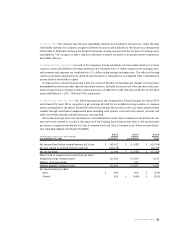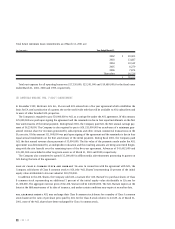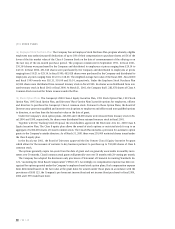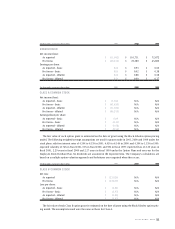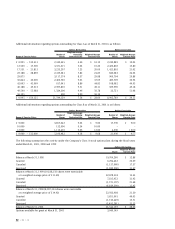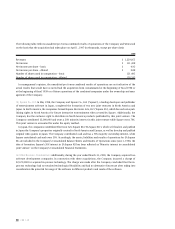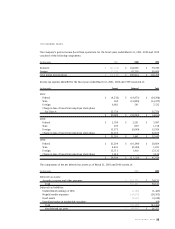Electronic Arts 2001 Annual Report Download - page 51
Download and view the complete annual report
Please find page 51 of the 2001 Electronic Arts annual report below. You can navigate through the pages in the report by either clicking on the pages listed below, or by using the keyword search tool below to find specific information within the annual report.
ELECTRONIC ARTS
49
(6) CONCENTRATION OF CREDIT RISK
The Company extends credit to various companies in the retail and mass merchandising industry. Collection of
trade receivables may be affected by changes in economic or other industry conditions and may, accordingly,
impact the Company’s overall credit risk. Although the Company generally does not require collateral, the Company
performs ongoing credit evaluations of its customers and reserves for potential credit losses are maintained.
Short-term investments are placed with high credit-quality financial institutions or in short-duration high
quality securities. The Company limits the amount of credit exposure in any one institution or type of invest-
ment instrument.
(7) LITIGATION
The Company is subject to pending claims and litigation. Management, after review and consultation with counsel,
considers that any liability from the disposition of such lawsuits would not have a material adverse effect upon
the consolidated financial condition of the Company.
(8) STOCK SPLIT
On August 14, 2000, the Company’s Board of Directors authorized a two-for-one stock split of its Class A common
stock which was distributed on September 8, 2000 in the form of a stock dividend for shareholders of record at
the close of business on August 25, 2000. All authorized and outstanding share and per share amounts of Class A
common stock in the accompanying consolidated financial statements for all periods have been restated to reflect
the stock split.
(9) PREFERRED STOCK
At March 31, 2001 and 2000, the Company had 10,000,000 shares of Preferred Stock authorized but unissued. The
rights, preferences, and restrictions of the Preferred Stock may be designated by the Board of Directors without
further action by the Company’s stockholders.
(10) TREASURY STOCK
In February 1999, the Board of Directors approved a plan to purchase up to two million shares of the Company’s
common stock. For the years ended March 31, 2001 and 2000, the Company did not repurchase shares. For the
year ended March 31, 1999, the Company repurchased 446,000 shares for approximately $9,001,000 under this
program. For the fiscal year ended March 31, 2001, there were no shares reissued under the Company’s Stock
Plans. For the fiscal year ended March 31, 2000, 246,000 shares were reissued under the Company’s Stock Plans.
For the fiscal year ended March 31, 1999, 200,000 shares were reissued under the Company’s Stock Plans.
When treasury shares were reissued, any excess of the average acquisition cost of the shares over the proceeds
from reissuance was charged to retained earnings.






